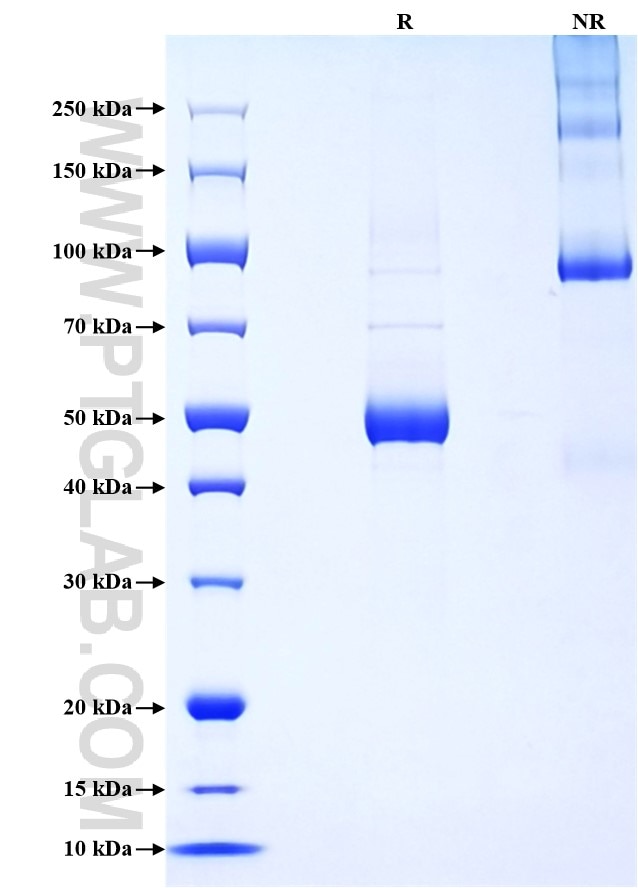Recombinant Human GPR56 protein (rFc Tag)
Species
Human
Purity
>90 %, SDS-PAGE
Tag
rFc Tag
Activity
not tested
Cat no : Eg2478
Validation Data Gallery
Product Information
| Purity | >90 %, SDS-PAGE |
| Endotoxin | <0.1 EU/μg protein, LAL method |
| Activity |
Not tested |
| Expression | HEK293-derived Human GPR56 protein Arg26-Asn171 (Accession# Q9Y653-1) with a rabbit IgG Fc tag at the C-terminus |
| GeneID | 9289 |
| Accession | Q9Y653-1 |
| PredictedSize | 42.2 kDa |
| SDS-PAGE | 45-55 kDa, reducing (R) condition |
| Formulation | Lyophilized from 0.22 μm filtered solution in PBS, pH 7.4. Normally 5% trehalose and 5% mannitol are added as protectants before lyophilization. |
| Reconstitution | Briefly centrifuge the tube before opening. Reconstitute at 0.1-0.5 mg/mL in sterile water. |
| Storage Conditions |
It is recommended that the protein be aliquoted for optimal storage. Avoid repeated freeze-thaw cycles.
|
| Shipping | The product is shipped at ambient temperature. Upon receipt, store it immediately at the recommended temperature. |
Background
GPR56 (G-protein-coupled receptor 56, also named ADGRG1) is a member of the adhesion G-protein coupled receptor (aGPCR) family and one of the important players in the normal development of the brain. It plays a pivotal role in diverse neurobiological processes, including cortical formation, oligodendrocyte development, and myelination. Moreover, GPR56 has been reported to regulate VEGF secretion and angiogenesis in melanoma.
References:
1. Ganesh, Raksha A et al. Brain research vol. 1747 (2020): 147055. 2. Wu, Jinshan et al. Diabetes vol. 72,11 (2023): 1652-1663.

